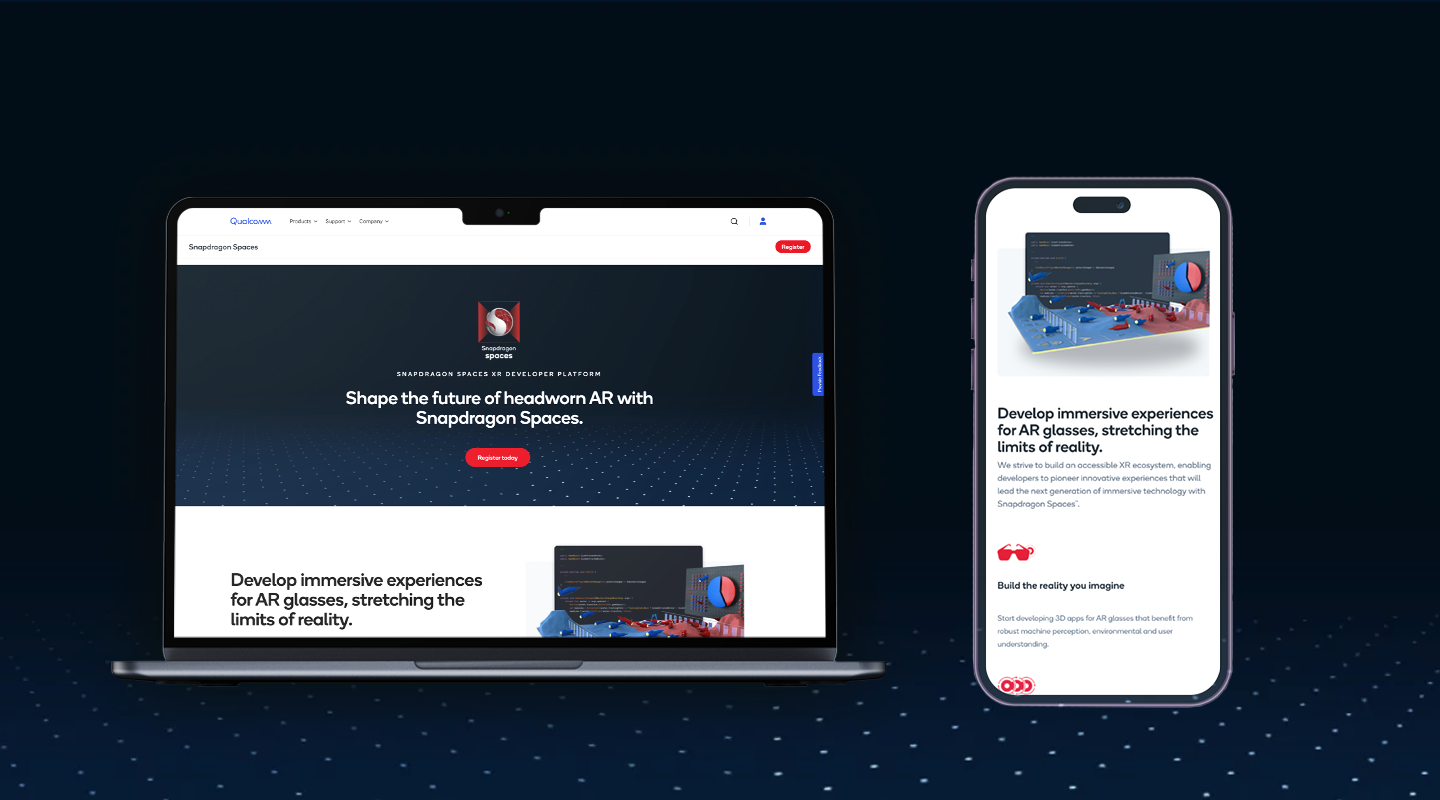
Web Page Design
Boosting developer conversions.
UX Design, Content Strategy, A/B Testing
January 2023
Snapdragon, a Qualcomm subsidiary, launches a new software development kit (SDK) that is compatible with AR compatible devices. This was a customer facing web page that our team was involved in advertising. We then tested page variations, keeping download conversion in mind.
I dove right into the collection of project brief information, page design, and content strategy. The long term purpose of the SDK promo page project was to test different page versions via Adobe Target, in hopes to better understand the tool and hopefully use for future promotions.
To comply with my company confidential information agreement, I have replaced select pieces of research and content in this case study. These select pieces of information are my own and do not reflect Qualcomm or its subsidiaries.
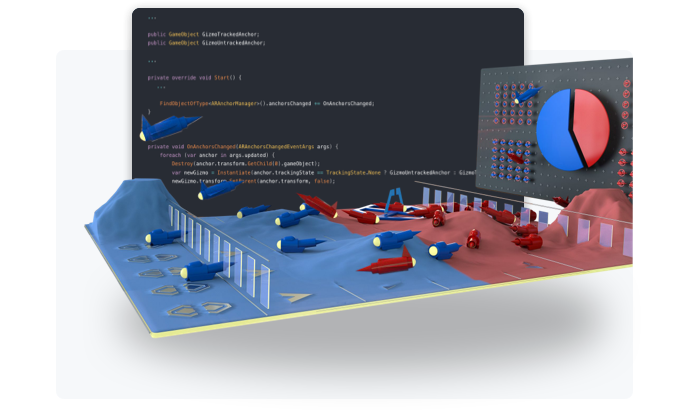
The more you know
What is an SDK?
A software Development Kit (SDK) provides tools for developers, including libraries, APIs, and documentation, within development or staging environments.
Vendors create and offer these types of kits to aid developers with kick starting their projects.
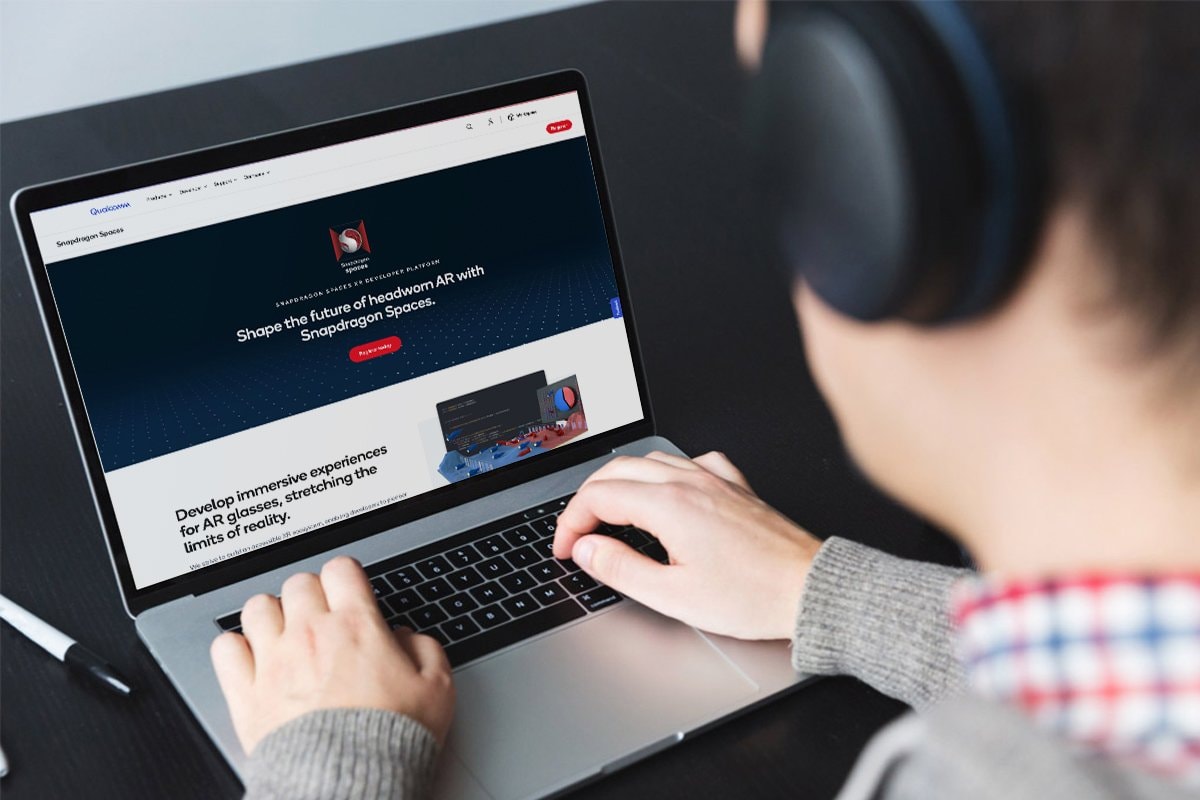
Developer visiting the Snapdragon Spaces SDK promo page.
Lead generation
Individual developers who are interested in building Augmented or Virtual Reality programs may not even know that we are offering kits for them to kick start a project.
This was a fantastic opportunity for us to reach those users, to access this software kit via advertisements.

Testing routines
The main reason for building this Snapdragon Spaces SDK page was a great way for us to utilize user testing tools through feeding them the meta information and leveraging different design layouts, being randomized for different users.
Note that a Spaces hub existed prior to the net-new promo page.

THE GOAL
Assist developers with their projects.
The ultimate goal of this promo page was to convert users into customers. Our hopes were that the CTA success would lead users to create an account via registration form to access the software dev kit brief. We did this by testing two different versions of the page layout. The sticky navigation CTA success was more than 80% successful than the 3 other registration CTAs. The only had one difference for Version A was a 3rd CTA. The sticky navigation was removed for Version B. The question is, how would we test for success?
Final Design Experience
Putting it all together.
Demo the screens below. Scroll through to see the initial ad experience.
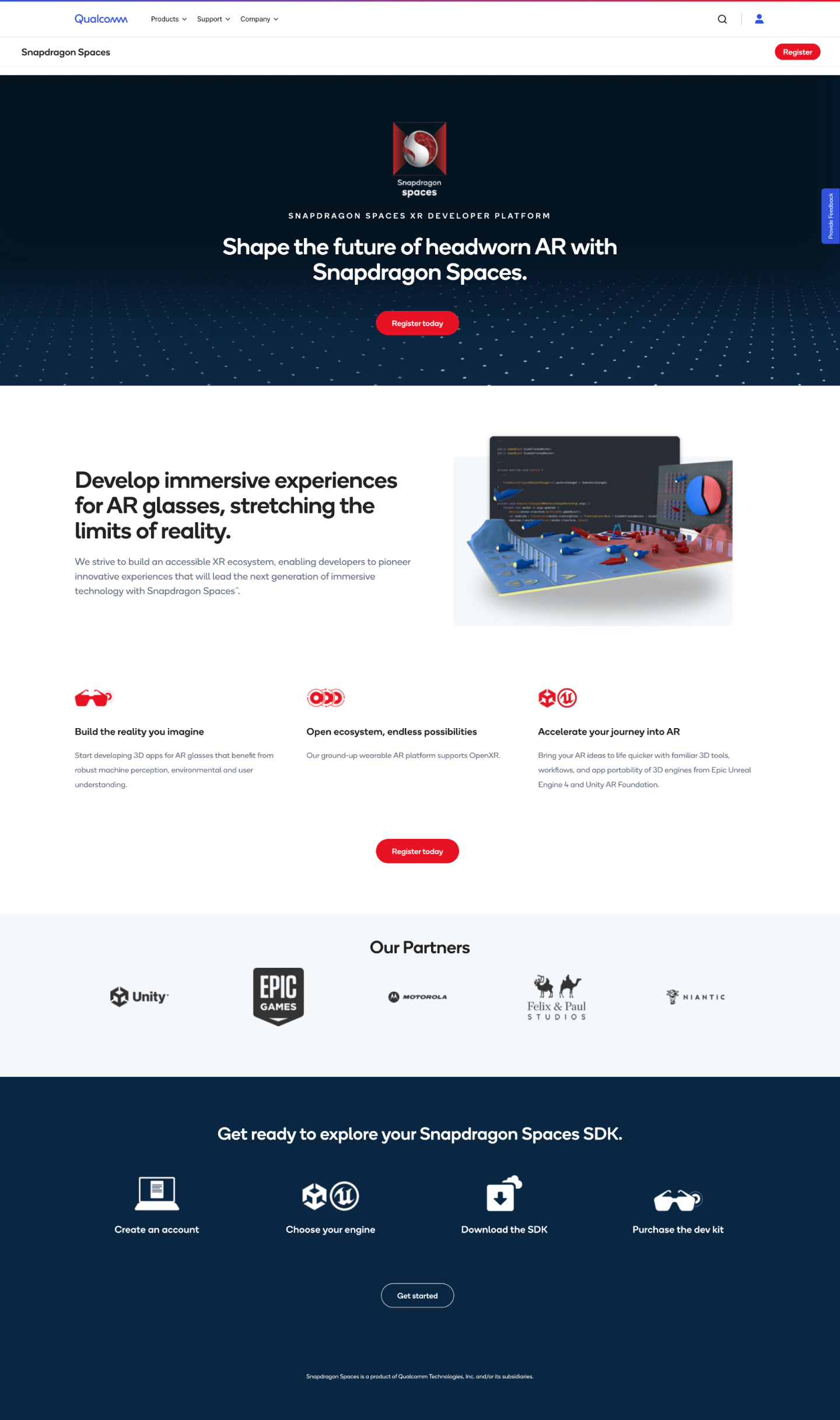
Version A: Sticky secondary navigation with CTA
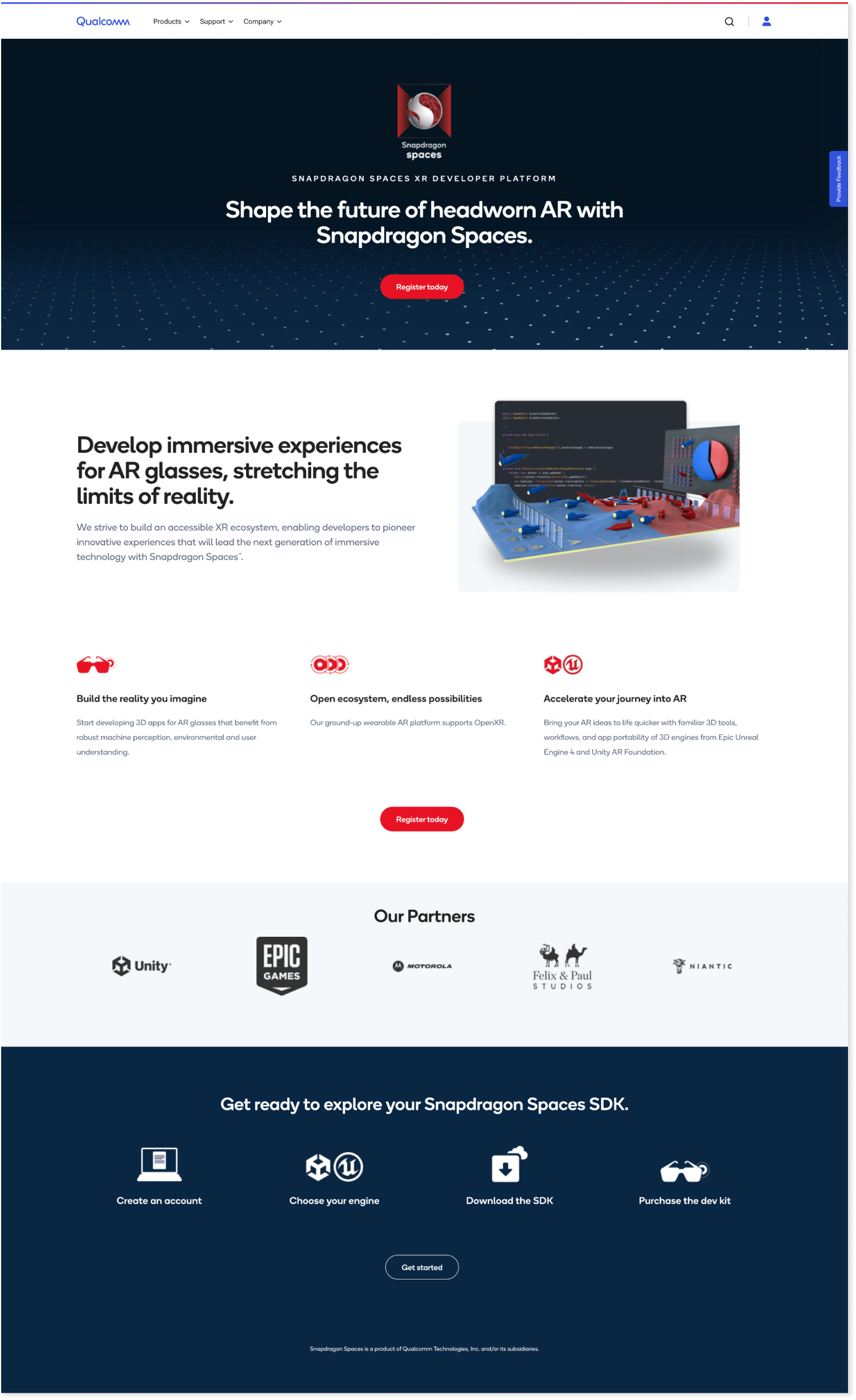
Version B: NO sticky secondary navigation with CTA
Testing routines
Funneling users to the promo page.
Getting users to the webpage was tricky. How were we going to guarantee landings in order to test the web page variations? The final settlement landed on good old fashioned digital advertisements. From here, the ad designs were handed off to one of our marketing agencies and they programmed the advertisements to appear for users on their relative browsers.
Lead GeneratioN
Funneling users to the promo page.
Getting users to the webpage was tricky. How were we going to guarantee landings in order to test the web page variations? The final settlement landed on good old fashioned digital advertisements. From here, the ad designs were handed off to one of our marketing agencies and they programmed the advertisements to appear for users on their relative browsers.
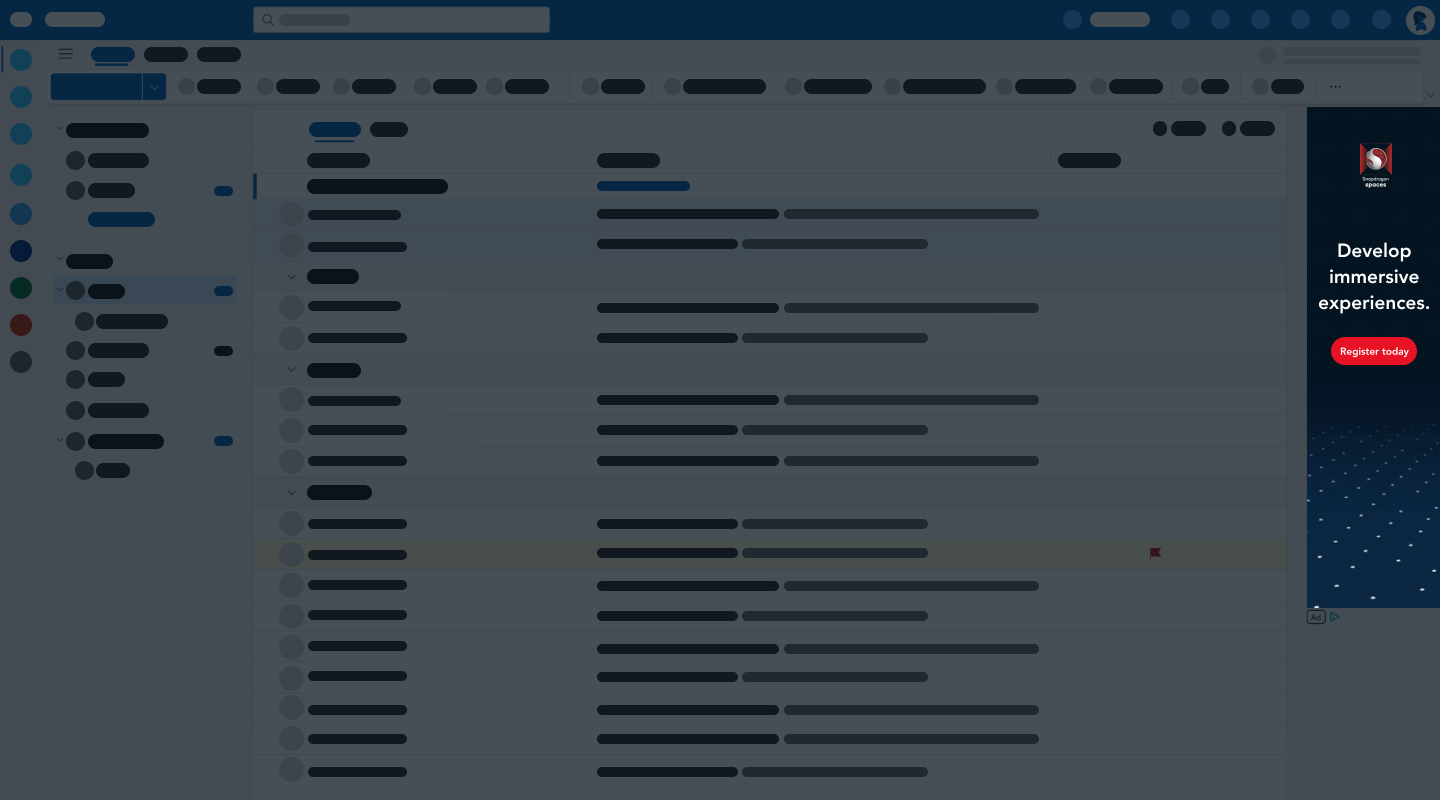
Snapdragon SDK advertisement appearing for a user via their email landing inbox page.
Back
Final Design Experience
Putting it all together.
Demo the screens below. Scroll through to see the initial ad experience.

Version A: Sticky secondary navigation with CTA

Version B: NO sticky secondary navigation with CTA
Testing routines
Funneling users to the promo page.
Getting users to the webpage was tricky. How were we going to guarantee landings in order to test the web page variations? The final settlement landed on good old fashioned digital advertisements. From here, the ad designs were handed off to one of our marketing agencies and they programmed the advertisements to
appear for users on their relative browsers.

Snapdragon SDK advertisement appearing for a user via their email landing inbox page.
Lead GeneratioN
Funneling users to the promo page.
Getting users to the webpage was tricky. How were we going to guarantee landings in order to test the web page variations? The final settlement landed on good old fashioned digital advertisements. From here, the ad designs were handed off to one of our marketing agencies and they programmed the advertisements to
appear for users on their relative browsers.
Lead generation
Individual developers who are interested in building Augmented or Virtual Reality programs may not even know that we are offering kits for them to kick start a project.
This was a fantastic opportunity for us to reach those users, to access this software kit via advertisements.

Testing routines
The main reason for building this Snapdragon Spaces SDK page was a great way for us to utilize user testing tools through feeding them the meta information and leveraging different design layouts, being randomized for different users.
Note that a Spaces hub existed prior to the net-new promo page.

THE GOAL
Assist developers with their projects.
The ultimate goal of this promo page was to convert users into customers. Our hopes were that the CTA success would lead users to create an account via registration form to access the software dev kit brief. We did this by testing two different versions of the page layout. The sticky navigation CTA success was more than 80% successful than the 3 other registration CTAs. The only had one difference for Version A was a 3rd CTA. The sticky navigation was removed for Version B. The question is, how would we test for success?

The more you know
What is an SDK?
A software Development Kit (SDK) provides tools for developers, including libraries, APIs, and documentation, within development or staging environments.
Vendors create and offer these types of kits to aid
developers with kick starting their projects.

Back to all work
Role: UX Designer
Timeline: Jan 2023
Teams: Design, Marketing, Analytics
Boosting developer conversions.
Snapdragon SDK Promotional Page
UX Design, Design System Alignment, UAT, Research
This case study showcases a comprehensive UX redesign of Qualcomm's Device Finder that transformed a basic device library into an intuitive product discovery platform, achieving a 13% conversion rate within the first month.